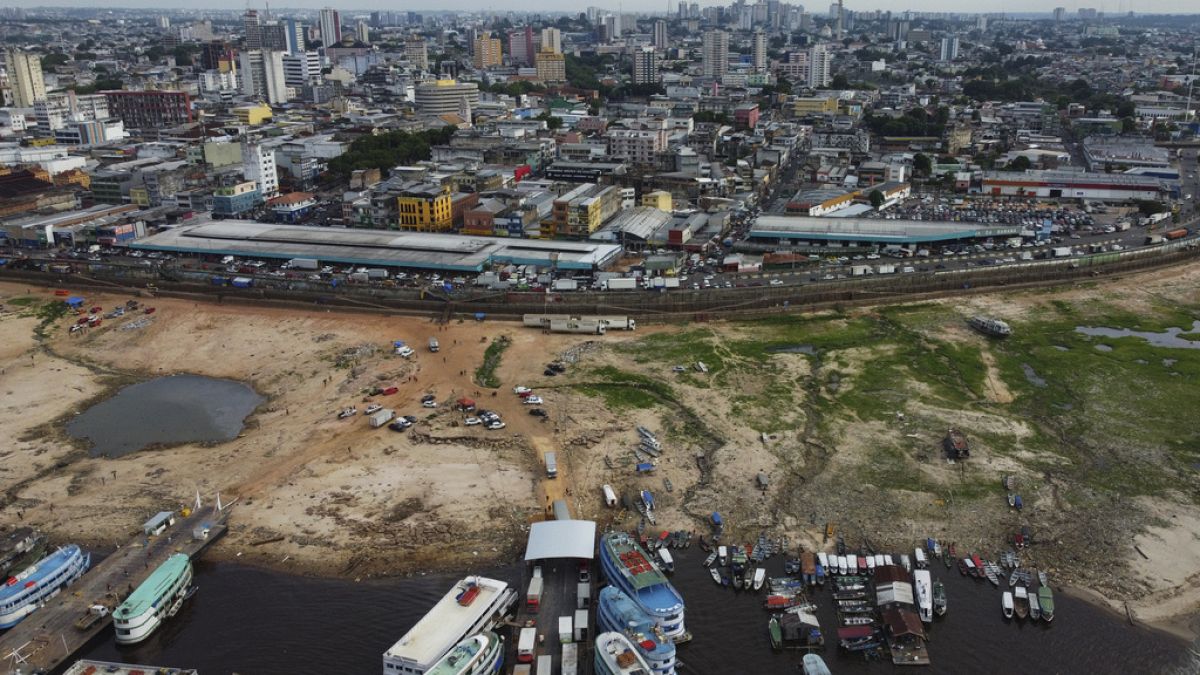The Amazon River’s tributary, the Negro River, has reached its lowest level ever recorded, according to Brazil’s geological service. This drop in water level, caused by a severe drought, has impacted the Amazon rainforest and other parts of Brazil. The river’s level in the port of Manaus was measured at 12.66 meters on Friday, significantly below its normal level of around 21 meters. The current level is the lowest in the 122 years of recorded measurements. Forecasts suggest that the water level may continue to decrease in the upcoming weeks due to anticipated low rainfall in upstream regions. Andre Martinelli, the hydrology manager in Manaus, predicts that the river will keep receding until the end of the month.
The drought has resulted in considerable challenges for locals living along the Negro River. Basic daily activities have become impossible for many, such as Gracita Barbosa, a 28-year-old cashier working on a floating shop. Due to the low water levels, boats that used to stop at her workplace can no longer navigate the river, leaving her out of work. Additionally, she is no longer able to bathe in the river and now has to travel longer distances to collect drinking water. The situation exemplifies the significant impact that the drought is having on the livelihoods of individuals in the region.
The low water levels not only affect daily activities but also have broader implications for the environment and the economy in the Amazon region. All major rivers in the Amazon basin, including the Madeira River, are at critical levels, indicating the severity of the current drought. The Negro River, known for draining about 10% of the Amazon basin, is the world’s sixth-largest river by water volume. The implications of the low water levels for the ecosystem and communities in the region are significant and require immediate attention and action to mitigate further damage.
Experts stress the importance of understanding the seasonality of water levels in the Amazon region. The fluctuation of water levels in the rivers is typically influenced by the rainy and dry seasons; however, the current dry season has been exceptionally worse than usual. With forecasts predicting continued low rainfall in upstream regions, the challenges posed by the drought are expected to persist. The situation highlights the need for effective water management strategies and sustainable practices to address the rising environmental concerns and ensure the well-being of local communities in the Amazon region.
In light of the unprecedented low water levels in the Negro River and other major rivers in the Amazon basin, urgent actions are needed to address the impacts of the severe drought. Government authorities, environmental organizations, and local communities must collaborate to implement effective water conservation measures and sustainable practices. Additionally, raising awareness about the significance of preserving water resources and protecting the Amazon rainforest is crucial to safeguarding the region’s unique ecosystem and biodiversity. By working together and taking proactive steps, we can support the recovery of the Amazon region and build resilience against future environmental challenges. It is essential to prioritize conservation efforts and sustainable development practices to ensure the long-term health and well-being of the Amazon ecosystem and its inhabitants.











